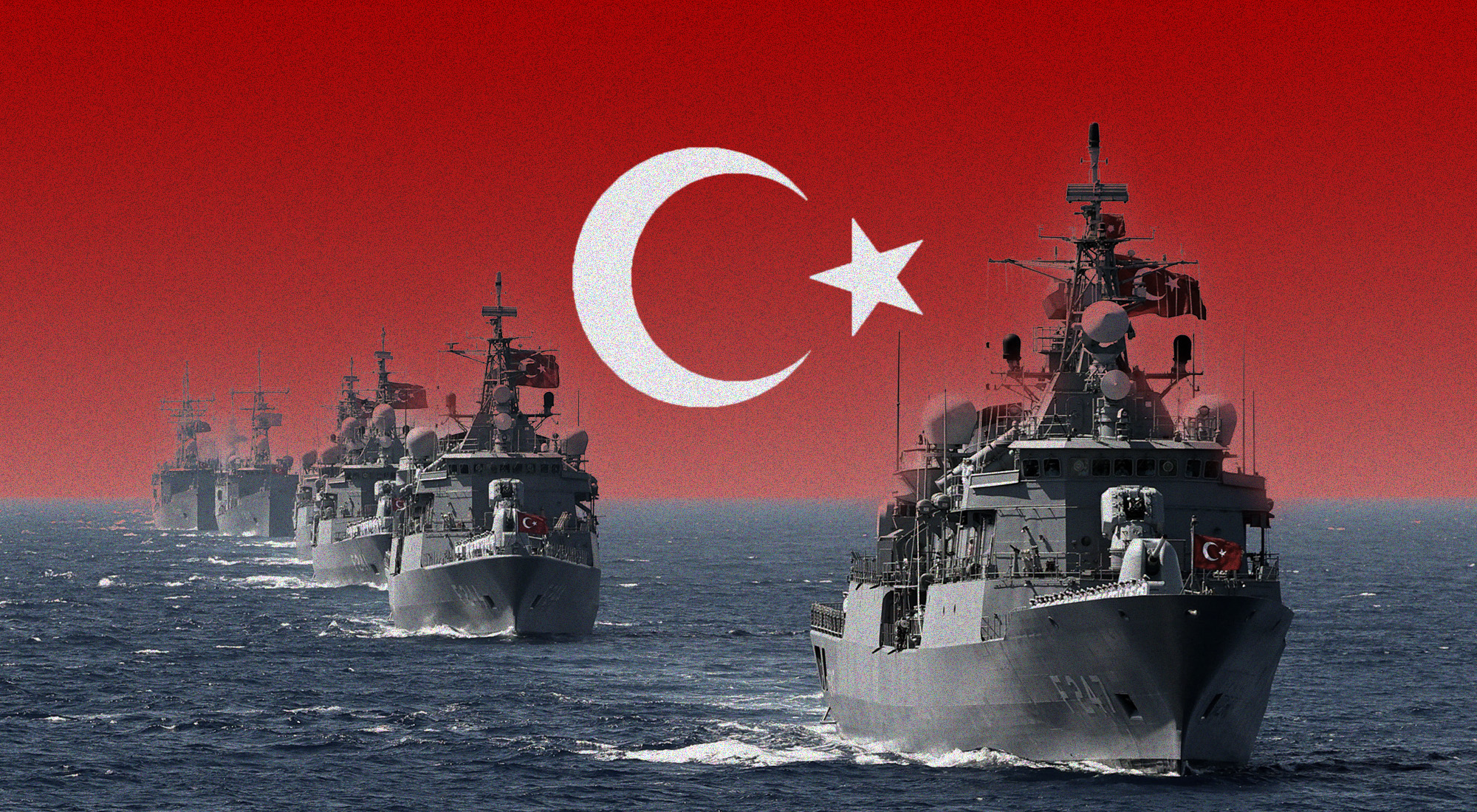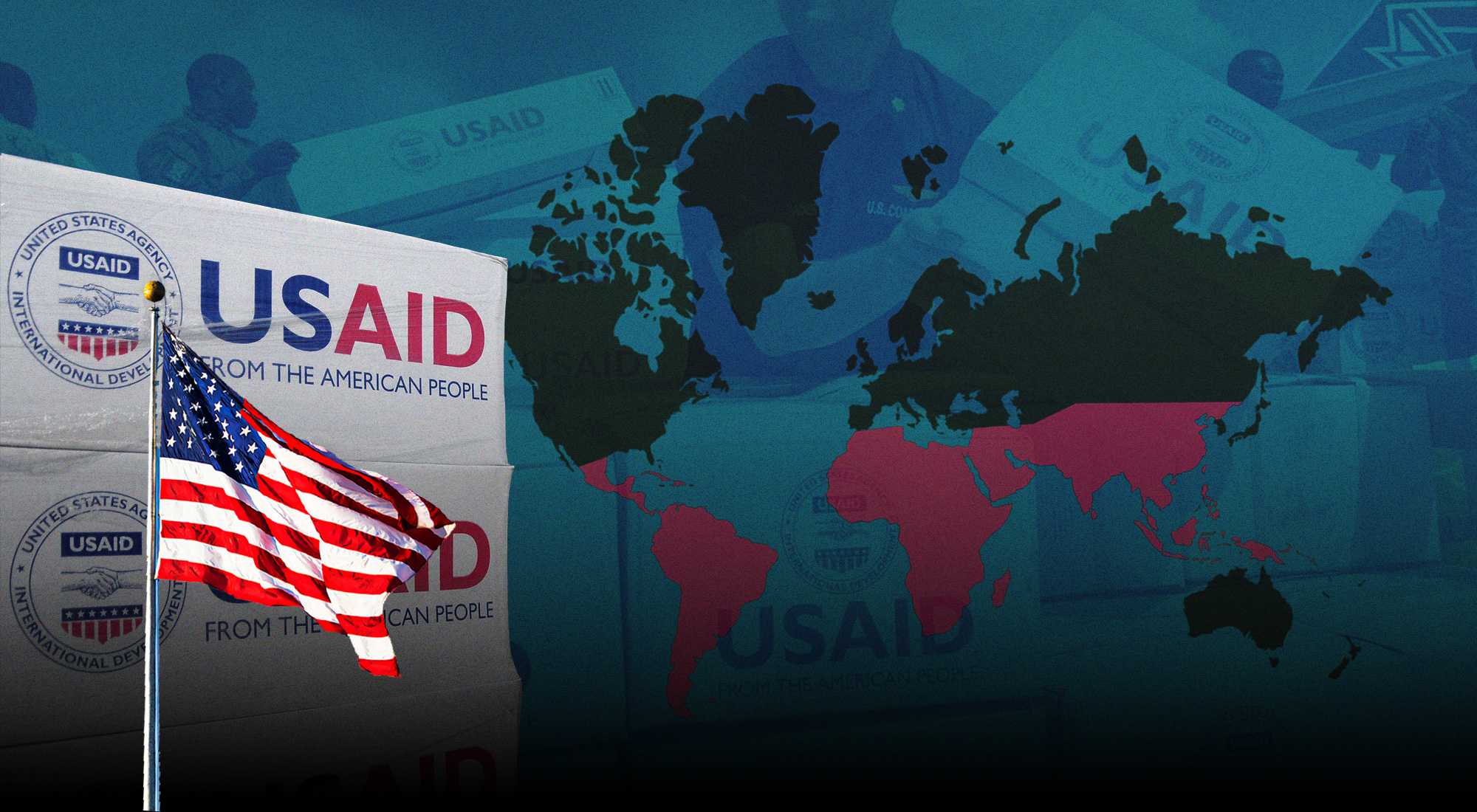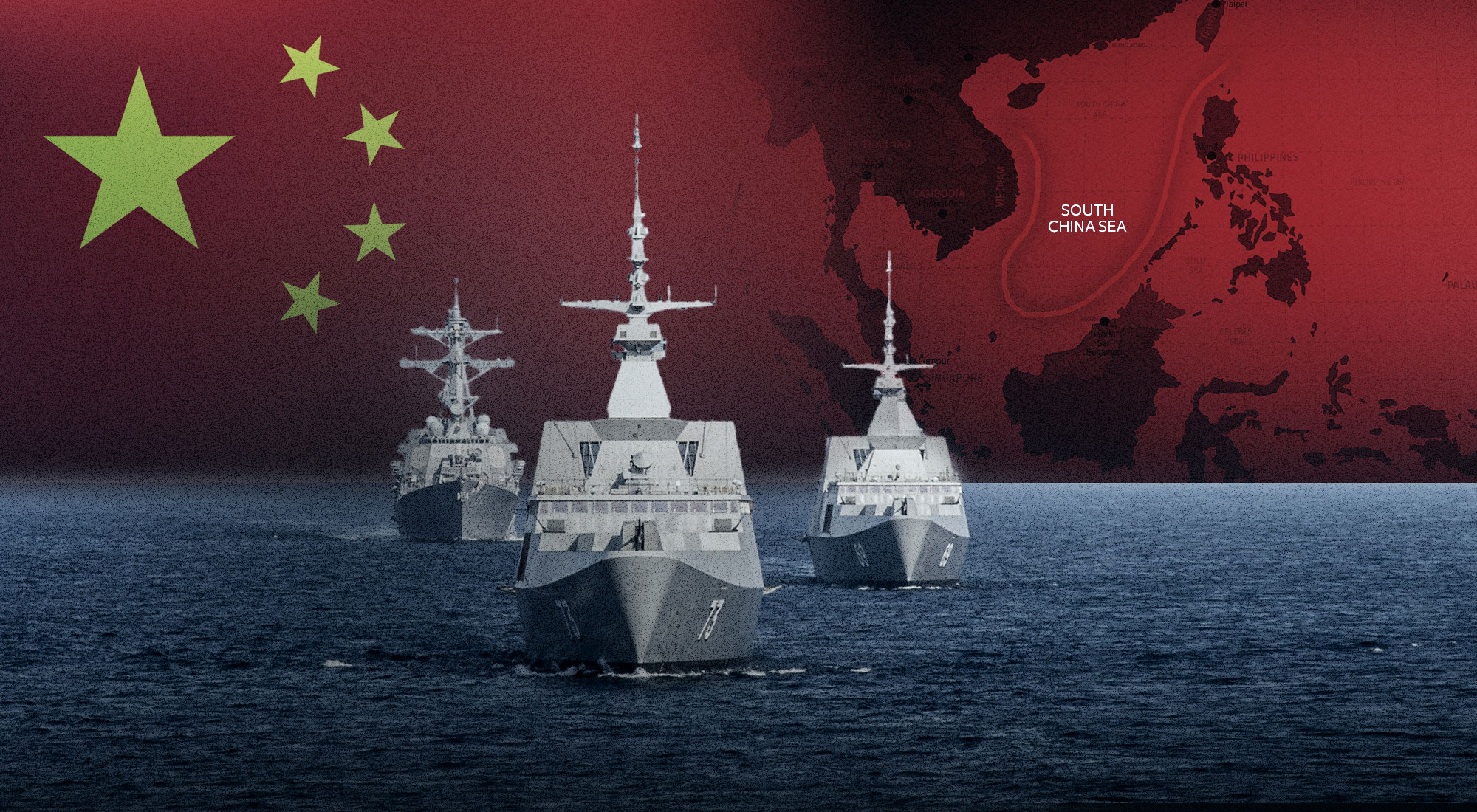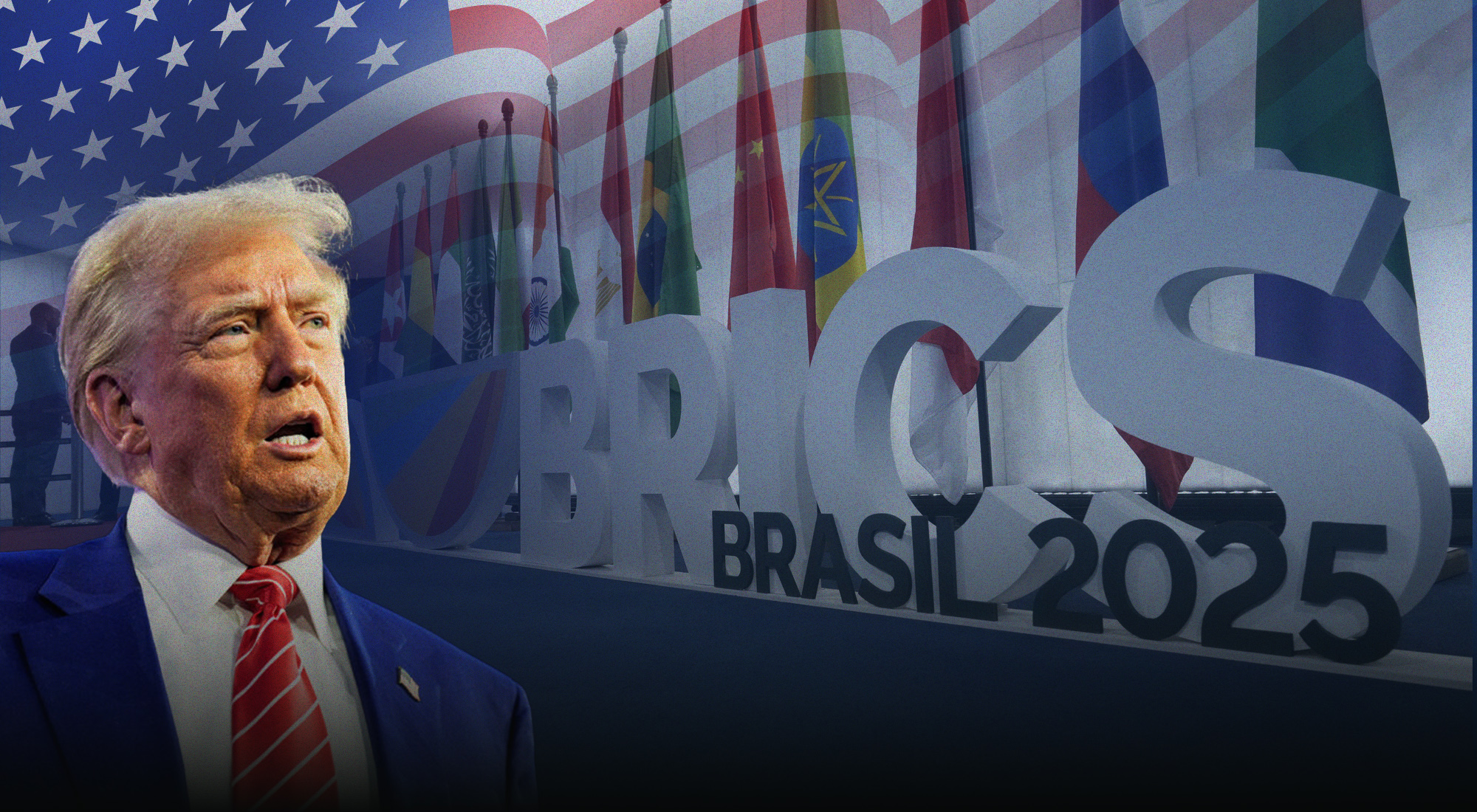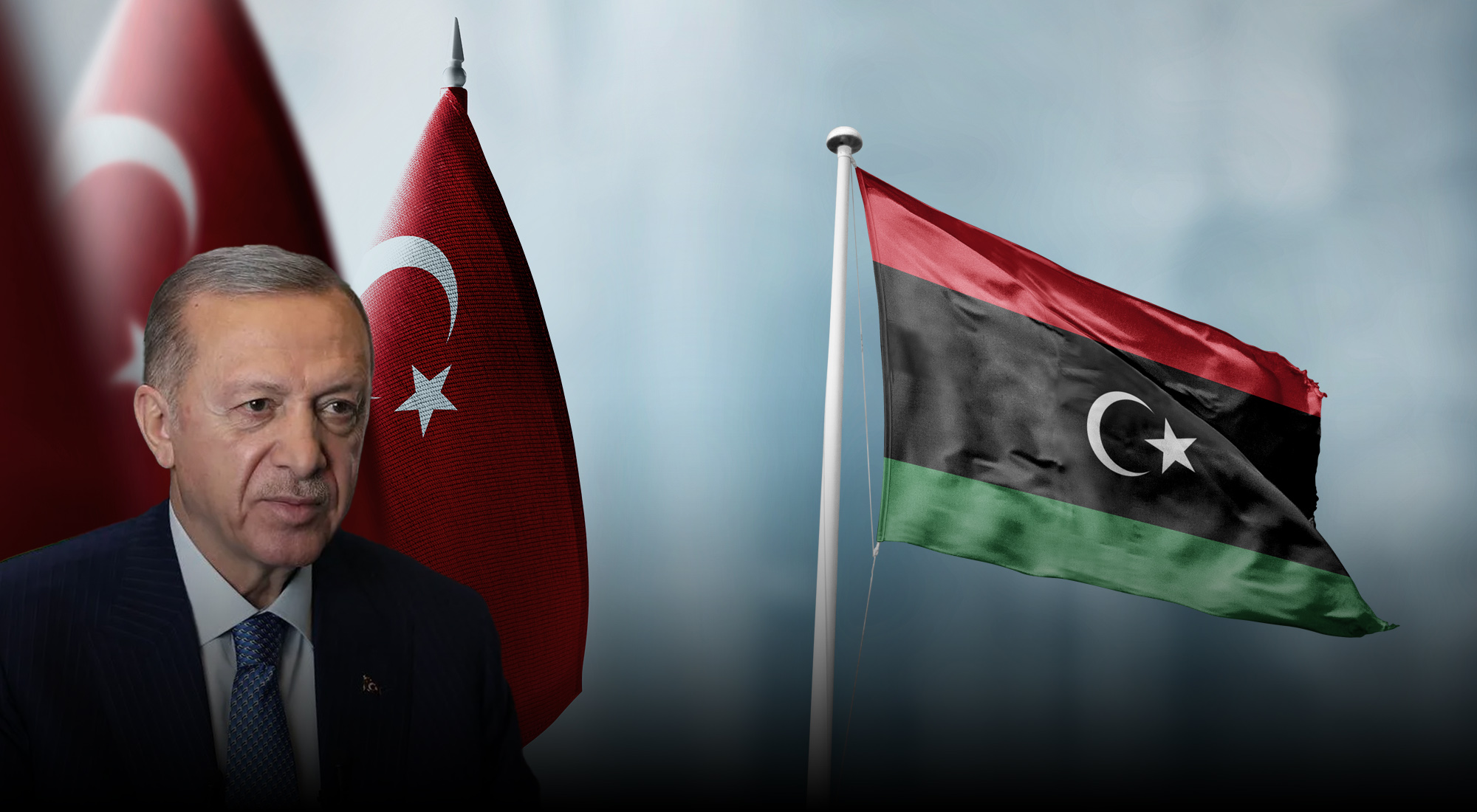In the first week of 2025, Türkiye’s Defense Ministry announced that it was building 31 new warships in a bid to bolster the country’s maritime power projection.[1] The projects include an aircraft carrier, an air defense warfare (AAW) destroyer, and a new class of submarine—all of which would become novel additions to Türkiye’s navy. While media attention on Türkiye’s defense industry has focused on the prowess of Unmanned Aerial Combat Vehicles (UCAVs) and domestic fighter jet production (Hürjet and KAAN), there are notable developments happening in the naval sector as well.[2]
Türkiye’s push to modernize its navy and enhance its maritime power projection capabilities is part and parcel of the country’s activist foreign policy and commitment to implement a forward-defense strategy, which relies on domestically produced arms.[3] The naval theater of Türkiye’s foreign policy activism also focuses on the extensive power play in the Eastern Mediterranean. Türkiye has for the past half decade actively pushed against Greek maximalist positions in the region,[4] coupling hard power military projection with extensive diplomatic engagements.
The summation of these policy decisions is articulated in the “Blue Homeland” doctrine,[5] which outlines Türkiye’s claims to maritime rights off the coasts of Anatolia and the Turkish-controlled part of Cyprus.[6] Blue Homeland—or its Turkish equivalent, Mavi Vatan—is not simply an answer to Greek claims in the region and the subsequent imposition of a Turkish counterclaim. Rather, the extensive doctrine, which has garnered mass scholarship over the last several years, details an elaborate grand strategy for Türkiye in the maritime realm.[7] Coined by Admiral (Ret.) Cem Gürdeniz in 2006, Blue Homeland as a strategy provides a roadmap to secure the maritime periphery and contribute to the state’s survival in a chaotic region; as a symbol, it denotes Türkiye’s foreign policy activism via the extension of the Vatan (homeland) concept.[8] Türkiye’s success in securing maritime agreements with Libya and Somalia are both viewed as manifestations of this doctrine. Blue Homeland has evolved into a cornerstone of Türkiye’s foreign and security policy and benefits from a popular appeal across the political spectrum in the otherwise highly fragmented Turkish domestic scene.
This insight offers a survey on recent developments in the maritime domain, first elaborating on the Blue Homeland concept and then three significant projects for the Turkish Navy: the MUGEM Aircraft Carrier, the TF-2000 AAW Destroyer, and the MILDEN Submarine. This is followed by an analysis of Türkiye’s growing maritime capabilities and impact on the regional power balance, particularly as tensions continue to run high in the Eastern Mediterranean. It is certainly worthy to explore how, confronted by Greek counterclaims as outlined by the Seville Map and supported by the European Union (EU), Türkiye’s activist stance and perception toward evolving maritime power dynamics in the region continue to attract attention.
The Blue Homeland concept in action
Persistent concerns in Ankara about sovereignty, territorial integrity, and security drive Türkiye toward a hardline policy, with Blue Homeland being a key example. As its capabilities expand and opportunities arise, Türkiye activates the Blue Homeland strategy to support its assertive policies. Armed interventions in Northern Syria, military basing rights in Libya, and naval operations in Somalia are all part of this broader strategy aimed at countering perceived encirclement against Türkiye’s vulnerable frontiers from Iraq to the Aegean Sea.
Blue Homeland serves as a coercive diplomatic tool in key theaters of conflict stretching from Greek Cyprus (RoC) and the Eastern Mediterranean to Ukraine and the Black Sea. The recent naval exercise dubbed “Blue Homeland 2025” underscores its aspect as a tactical element in the broader strategic contest encompassing these regions. It also dovetails Turkey’s efforts to delimit its maritime zones with the new government in Damascus, which would potentially come at the expense of Greek Cyprus.
The maritime delimitation agreement signed with the UN-recognized Tripoli government in Libya has greatly benefited Türkiye’s claims in the Eastern Mediterranean and granted it exclusive rights to explore hydrocarbons off the coast of the North African country.[9] The 2019 accords are characterized as a significant setback for the regional bloc designed against Türkiye in the Eastern Mediterranean, comprised of Greece, Greek Cyprus, and Israel.[10] Similarly, Türkiye’s maritime accords with Somalia have firmly placed Ankara at the nexus of the power equilibrium in the Horn of Africa.[11] Türkiye now moves to explore hydrocarbons across the Somali coast, train the Somali navy, and establish a lasting naval presence in the area.[12]
As of the latest reports from the Defense Ministry, Türkiye is moving to crown its political endeavors in the maritime arena with a highly calibrated naval presence through national projects. The National Warship Project (MILGEM) is a state-sanctioned initiative that seeks to replace older platforms in the Turkish navy with domestically produced and technologically advanced warships.[13] Similarly, the National Submarine Project (MILDEN) seeks to produce high-grade air-independent propulsion (AIP) submarines to act as a strategic deterrent and meet Türkiye’s evolving security challenges in the Mediterranean.[14] The extensive scope of these projects constitutes a natural step in Türkiye’s endeavor to emerge as one of the most formidable naval actors in the region.
MUGEM Aircraft Carrier
Some reports suggest that Türkiye is investing over US$8 billion into building new warships, marking a record in its naval construction program.[15] The scale of these investments highlights a profoundly new direction for the Turkish Navy. At the center is Türkiye’s ambitious plan to develop a national aircraft carrier—the MUGEM project—with a displacement of 60,000 tons, which is almost three times the size of TCG Anadolu, the first LHD/drone carrier. Aircraft carriers are often equated with great power status in the international system, with major naval powers such as the U.S. and China boasting several of such units. They serve as emblematic symbols of naval diplomacy in service of political goals, often deployed in far-away theaters for deterrence and coercion in crises.
The possible deployment of MUGEM would make Türkiye one of the few countries in the world to operate a vessel of such magnitude and power projection capability. In terms of development, MUGEM builds on the early success of TCG Anadolu, Türkiye’s domestically built amphibious assault ship (LHD), which is planned to house Turkish UCAVs such as Baykar TB-3, Kızılelma, and a naval variant of Hürjet. MUGEM is also expected to house advanced units of home-grown UCAVs, including elite models being developed by Baykar Industries.[16] Türkiye’s capabilities in 5th generation warfare and the high levels of interconnectedness between domestic defense products remain key features of its forward-defense doctrine, with MUGEM likely to showcase this expertise.
Figure 1: TCG Anadolu LHD

Source: Anatolia News Agency (AA), Türkiye Today, https://www.turkiyetoday.com/region/turkiyes-blue-homeland-2025-naval-drill-sparks-concern-from-greek-media-101282/.
TF-2000 AAW Destroyer
The TF-2000 guided-missile destroyer is a project that has been in consideration since the early 2000s, with the project again receiving impetus with Türkiye’s latest maritime push. The navy’s air defense umbrella comprises mainly SM-1 missiles with a 40km range fitted on G-class (former Perry-class) frigates, which date from the 1980s. To provide long-range coverage against modern air-borne threats, Türkiye needs a purpose-built platform to house advanced sensors and surface-to-air missiles like Siper (150km+ range).
The model is key to Türkiye’s forward-defense doctrine and the larger defense network under the “Steel Dome” AI-assisted, layered air defense system.[17] Among an array of anti-aircraft measures,[18] it will host a 96-cell indigenous Vertical Launch System (MİDLAS) capable of launching a variety of advanced munitions. Given that Türkiye realized the inadequacy of most of its naval fleet to engage advanced aircraft in stand-off ranges,[19] the TF-2000 remains integral to modernizing the navy and providing coverage for the carrier strike group to be led by MUGEM.
MILDEN Submarine
Submarines probably have the largest potential to shift the balance of naval power in the region. Armed with an impressive suite of sensors for signals intelligence (SIGINT) and electronic intelligence (ELINT), allowing for enhanced situational awareness and stealth operations, plus indigenous weapons like the AKYA heavyweight torpedo, the ATMACA anti-ship missile, and soon the GEZGİN cruise missile, providing formidable strike capabilities, they will enhance Türkiye’s Anti-Access/Area Denial (A2/AD) strategy, creating a powerful deterrent in the Eastern Mediterranean.
Figure 2: TCG Piri Reis during “Blue Homeland 2025” Exercise

Source: MSB, Anatolia News Agency (AA), https://www.aa.com.tr/tr/pg/foto-galeri/mavi-vatan-2025-tatbikati-tamamlandi/0#
In this context, the MILDEN represents another milestone in Türkiye’s maritime power projection, responding to an urgency to increase security outreach beyond coastal waters and modernize the existing inventory of submarines. Türkiye’s submarine arsenal is largely based on German-designed models, albeit with a degree of local inputs. Türkiye is seeking to localize domestic production and know-how in this field as part of its ongoing effort to home-shore the remaining critical components of the arms industry. The project is expected to deliver the first units in 2030.
What do these projects say about Türkiye’s foreign policy activism?
Türkiye’s expansive investments into the naval branch occupy the nation’s strategic thinking over the next decade, given the massive cost and labor going into these projects. These investments are happening at a time of economic hardship in Türkiye, with the government essentially moving forward with austerity measures to bring inflation down. The defense industry currently looks isolated from such measures, with the latest central budget allocating over US$45 billion to defense for 2025.[20] A significant portion of these funds belong to efforts to build MUGEM, TF-2000 and MILDEN—all of which were given a simultaneous start to operations with steel-cutting ceremonies at the beginning of the year.
Türkiye’s naval investments are not aimed at creating tensions or at militarizing conflicts but rather at a concerted effort to build the next phase of domestic capabilities for defensive purposes. Türkiye’s UCAV success has propelled the defense industry to new heights, making the country an export giant in this niche segment. Now, with ambitious projects across the Turkish Navy and the Air Force, Türkiye is moving to an advanced stage in this process.[21] It is geared toward domestic manufacturing, which requires extremely sophisticated engineering design and know-how. As the defense industry has maturated over the last decade, these further developments now look within Türkiye’s grasp.
Indeed, Türkiye’s push is also part of responding to complex security requirements. Türkiye’s maritime vicinity remains highly militarized by both allied NATO countries and third parties such as Russia and Israel. Conflicts in various theaters of the Middle East, while subsiding, remain alive. Türkiye looks to exercise power across several maritime fronts, with the Black Sea and Eastern Mediterranean having precedence. This is both related to safeguarding critical economic interests and creating a unified sphere of security in areas deemed of strategic importance to Türkiye.
Analysts argue that Russia’s war with Ukraine has allowed Türkiye to become the dominant power in the Black Sea.[22] This is a critical component of Türkiye’s maritime power projection, which not only addresses Türkiye’s goals in the Eastern Mediterranean but also considers a holistic approach to the question of security maximization and power projection. New naval units are bound to have an impact across these theaters, bolstering Türkiye’s capabilities overall. This has ramifications for the wider power dynamic and NATO’s own power projection goals against Russian interests in the region. The recent Blue Homeland naval exercise in the Black Sea showcases Türkiye’s interest in securing this vital portion of its maritime vicinity.
In Africa, Türkiye and Somalia have significantly strengthened their naval cooperation.[23] A new agreement between the two countries allows Türkiye to train, equip, and modernize the Somali navy, as well as patrol the Somali Exclusive Economic Zone (EEZ). This builds on their strong military relations and existing Turkish security infrastructure in Mogadishu, including the largest overseas base it has. This agreement, finalized in July 2024 by Turkish Energy Minister Alparslan Bayraktar, allows Türkiye to explore Somali territorial waters in three blocks, each corresponding to 5,000 km². The seismic exploration vessel Oruç Reis will lead these operations, supported by naval escorts. Furthermore, Türkiye’s armed forces have received a two-year authorization from the parliament to continue their foreign deployment in Somalia, with explicit reference to naval activities. The cooperation seems to be part of Türkiye’s broader strategy to enhance its maritime power and expand beyond the scope of the Eastern Mediterranean.
Turkish Navy in transition
All these developments are complementary to Türkiye’s main goal of pursuing maritime expansion, highlighted in the Blue Homeland doctrine. While Türkiye had originally devised a more comprehensive maritime push as part of an effort to limit Greek encroachment on its territorial waters and continental shelf, the original mission of the Blue Homeland has now expanded and positions Türkiye as an emerging naval power—already boasting the most powerful navy in the Middle East. Türkiye is essentially in the stage of transitioning from being a medium-sized naval power,[24] which can exercise considerable influence in its region, to a more competent global power with blue-water capabilities and an expansive naval outreach.
This transition is marked by ongoing developments in the navy and the drive to develop projects such as MUGEM, TF-2000 and MILDEN. The outcome, however, depends on Türkiye’s ability to realize such projects to completion, which are borne with risks and challenges. While Türkiye’s defense executives are determined to realize the Blue Homeland strategy, the endeavor remains costly and labor-intensive, risking an arms race that could hurt other branches of the defense economy. The pursuit of resources for major naval and other defense projects could create competition for funding and talent, which might be a challenge in the short-to-medium run. Türkiye will likely seek strategic relocation of assets and investments to ensure the perpetuity of such projects.
This transition also risks adding to Türkiye’s rivalries with other regional powers and potentially with global players such as the U.S. and the EU. Despite Türkiye and Greece both being members of the NATO alliance, the two countries continue to navigate a complex relationship, ridden with security concerns, conflicting claims, and escalatory rhetoric on both sides. As Türkiye moves to realize the vast extent of its naval projects, Greece catches up by seeking assistance from its Western allies engaging in naval acquisitions to balance the scale of power. While the two NATO allies are unlikely to ever engage in outright conflict, escalation nevertheless could materialize in a tense stand-off—as in 1996 over Kardak/Imia islets and in 2020 over Eastern Mediterranean energy rights. Greece’s mutual defense cooperation agreement (MDCA) with France and the U.S., and their joint vigilance against Türkiye, contribute to an intensifying, mixed-motive security dilemma that leads to fear, produces tit-for-tat behavior, and creates a spiraling of the regional arms race.[25]
While there is room for conflict in the maritime domain, Türkiye’s naval strategy still looks largely aligned with NATO interests and American foreign policy priorities. In August 2024, Turkish and U.S. amphibious assault vessels conducted a joint naval exercise in the Eastern Mediterranean,[26] which was seen as an indication that Türkiye is seeking to harmonize its maritime strategy with its key ally in NATO and limit any potential fallout from perceptions of Türkiye’s growing naval arsenal. Ties to the U.S. remain key to Türkiye’s efforts to limit the extent of Western support for maximalist Greek maritime claims in the region.
Moreover, Türkiye’s maritime expansion is welcome news for the transatlantic alliance. The alliance has relied largely on U.S. naval deterrence to ensure a presence in the Mediterranean. With Türkiye now emerging as a major player, NATO can utilize this position. Naval supremacy remains key to the alliance’s overall deterrence strategy both against Russia and various non-state armed groups that risk global trade and commerce across the Mediterranean, Horn of Africa, Red Sea, and the Black Sea. Türkiye is making valuable contributions to these fronts already and is poised to do so even more with developments in the maritime sector.
Türkiye’s challenge in this respect will be to balance the delicate web of relations with potential rivals in the area such as Greece and Israel, all the while harmonizing its activist foreign policy with U.S. security alignments in the Middle East, however difficult that might be. Developments under the new Trump administration could exacerbate these trends, with the U.S. seeking limited engagement in the Middle East and potentially looking to remove strategic assets from the region—including naval ones. Türkiye’s naval activism could play a bigger role in filling the void in this scenario.
Looking ahead
The World Directory of Modern Military Warships places Türkiye at the 10th position globally among naval powers.[27] While different studies have differing positions on Türkiye, it has become clear that the Turkish Navy is one of the most formidable in the region—basically unrivaled in the Middle East. Türkiye’s continued investment into its naval power projection looks to further this trend, with the navy now potentially gaining parity (except for the nuclear dimension) with significant European powers such as Italy, France, and the UK. Türkiye’s ambitious naval program, with the most impressive project being the MUGEM Aircraft Carrier, is geared toward this goal of tilting the regional balance of power in its favor, all the while securing critical Turkish foreign policy goals that require a strong naval outreach.
Türkiye is now in a transitionary phase in its naval build-up and power projection program. This initial phase involved Türkiye’s maritime delimitation strategy in the Eastern Mediterranean and an effort to balance against the regional bloc of countries that had aligned to counter Turkish interests.[28] Maritime accords with Libya, Somalia—and now potentially Syria[29] all work toward this goal. In the next phase, with diplomatic and political safeguards in place, Türkiye is moving to further these efforts with hard power projection. As it invests considerable resources and time into the advancement of its navy, Türkiye is in essence advancing its long-standing foreign and security policy goals enshrined in the Blue Homeland concept. The doctrine based on that concept is the initial benchmark from which Türkiye’s ambitious naval program emanated—and now serves as the foundational basis of the country’s rationale in developing and maintaining a technologically advanced naval force.
The transformation of Türkiye’s navy, of course, remains incomplete and continues to face challenges due to geopolitical tensions in the region. However, given the prowess of the defense sector in recent years and the vast extent of state resources being directed to the arms industry, the likelihood that mega projects like MILDEN will reach fruition is high. Türkiye has already proven its naval credentials at the regional level—now, it is moving to the league of global naval players, producing its own array of sophisticated naval units. The success of these efforts will be visible over the next decade as Türkiye’s additions to its navy gain speed with increased investment. This looks to become the next chapter in Türkiye’s broad maritime grand strategy.
[1] Ragıp Soylu, “Turkey building 31 warships to boost regional dominance and global power,” Middle East Eye, January 8, 2025, https://www.middleeasteye.net/news/turkey-building-31-warships-boost-regional-dominance-and-global-power.
[2] Sıtkı Egeli, Serhat Güvenç, Çağlar Kurç and Arda Mevlütoğlu, “From Client to Competitor: The Rise of Turkiye’s Defence Industry,” IISS, May 1, 2024, https://www.iiss.org/research-paper/2024/05/from-client-to-competitor-the-rise-of-turkiyes-defence-industry/.
[3] Batu Coşkun, “Turkey’s Military-Industrial Complex: Drones, Diplomacy and Succession,” TRENDS Research and Advisory, April 22, 2024, https://trendsresearch.org/insight/turkeys-military-industrial-complex-drones-diplomacy-and-succession/.
[4] “Türkiye’s ambitious ‘Blue Homeland’ policy disturbs Greek media,” Daily Sabah, January 27, 2025, https://www.dailysabah.com/politics/turkiyes-ambitious-blue-homeland-policy-disturbs-greek-media/news.
[5] “Mavi Vatan Kavramı ve Önemi,” Mavi Vatan, October 23, 2023, https://mavivatan.net/mavi-vatan-kavrami-ve-onemi/.
[6] Ryan Gingeras, “Blue Homeland: The Heated Politics Behind Turkey’s New Maritime Strategy,” War on the Rocks, June 2, 2020, https://warontherocks.com/2020/06/blue-homeland-the-heated-politics-behind-turkeys-new-maritime-strategy/.
[7] Serkan Balkan and Murat Yeşiltaş, “From Geopolitical Anxiety to Assertive Stance: The Historical Construction and Transformation of Turkish Naval Strategy,” Insight Turkey, September 12, 2023, https://www.insightturkey.com/articles/from-geopolitical-anxiety-to-assertive-stance-the-historical-construction-and-transformation-of-turkish-naval-strategy.
[8] Serhat Süha Çubukçuoğlu, “Maritime Security Aspects of Türkiye-Somalia Defense Cooperation Agreement,” TRENDS Research & Advisory (blog), May 26, 2024, https://trendsresearch.org/insight/maritime-security-aspects-of-turkiye-somalia-defense-cooperation-agreement/.
[9] Mesut Hakki Casin, “Strategic, legal aspects of Turkey-Libya deal,” Anadolu Agency, December 13, 2019, https://www.aa.com.tr/en/africa/analysis-strategic-legal-aspects-of-turkey-libya-deal/1673079.
[10] Michael Harari, “The Great Sea Interconnector: Prospects for an Electrical Cable Connecting Greece, Cyprus, and Israel,” The Begin-Sadat Center for Strategic Studies, July 25, 2024, https://besacenter.org/the-great-sea-interconnector-prospects-for-an-electrical-cable-connecting-greece-cyprus-and-israel/.
[11] Kiran Baez, “Turkey signed two major deals with Somalia. Will it be able to implement them?,” Atlantic Council, June 18, 2024, https://www.atlanticcouncil.org/blogs/turkeysource/turkey-signed-two-major-deals-with-somalia-will-it-be-able-to-implement-them/.
[12] Çubukçuoğlu, “Maritime Security Aspects of Türkiye-Somalia Defense Cooperation Agreement”.
[13] “Milgem Projesi,” Türkiy Yüzyılı, October 23, 2023, https://turkiyeyuzyili.com/proje-milgem-projesi.
[14] “Milli Denizaltı (MİLDEN) Projesi,” Mavi Vatan, April 15, 2023, https://mavivatan.net/milli-denizalti-milden-projesi/.
[15] Patrick Sykes, “Turkey Bets on Naval Clout for Edge in High-Seas Power Play,” Bloomberg, January 24, 2025, https://www.bloomberg.com/news/articles/2025-01-24/turkey-bets-on-homegrown-navy-for-edge-in-high-seas-power-play?embedded-checkout=true.
[16] “MUGEM Milli Uçak Gemisi inşası başladı: Donanma durmuyor,” Savunma Sanayi ST, January 2, 2025, https://www.savunmasanayist.com/mugem-milli-ucak-gemisi-insasi-basladi-donanma-durmuyor/.
[17] S. Süha Çubukçuoğlu ve Umud Shokri, “Türkiye’s Steel Dome Air Defense Solution,” TRENDS Research & Advisory (blog), January 18, 2025, https://trendsresearch.org/insight/turkiyes-steel-dome-air-defense-solution/.
[18] Mustafa Emir Bilgen, “TF-2000 Hava Savunma Harbi Muhribi Projesi,” Mavi Vatan, September 21, 2024, https://mavivatan.net/tf-2000-hava-savunma-harbi-muhribi-projesi/.
[19] Tayfun Özberk, “Turkish Navy Starts Construction Of 3 Major Projects: MUGEM Aircraft Carrier, TF-2000 Destroyer, MILDEN Submarine,” Naval News, January 2, 2025, https://www.navalnews.com/naval-news/2025/01/turkish-navy-starts-construction-of-3-major-projects-mugem-aircraft-carrier-tf-2000-destroyer-and-milden/.
[20] Gülsüm Kaya, “Türkiye’nin 2025 yılı savunma bütçesi belli oldu,” Defence Turk, October 18, 2024, https://www.defenceturk.net/turkiyenin-2025-yili-savunma-butcesi-belli-oldu.
[21] Deniz Istikbal, “Türkiye’s naval armed industry: A rising power,” Daily Sabah, January 30, 2025, https://www.dailysabah.com/opinion/op-ed/turkiyes-naval-armed-industry-a-rising-power.
[22] Alper Coşkun, “The shifting balance of power in the Black Sea,” February 14, 2024, https://www.gisreportsonline.com/r/turkey-black-sea/.
[23] TRENDS Türkiye Office, “Türkiye and Somalia: A “Special Relationship,” TRENDS Research and Advisory, September 13, 2024, https://trendsresearch.org/insight/turkiye-and-somalia-a-special-relationship/?srsltid=AfmBOoodU6F6Fms4XGE2n-b1fbL_ccWMaVR-_-Ol-4nA8YQyv9TjKxFE.
[24] Erman Çete, “What accounts for Turkiye’s aggressive naval expansion?,” The Cradle, January 30, 2025, https://thecradle.co/articles-id/28676.
[25] Serhat Süha Çubukçuoğlu, Turkey’s Naval Activism: Maritime Geopolitics and the Blue Homeland Concept | SpringerLink, 1st Edition, Palgrave Studies in Maritime Politics and Security (New York, NY: Palgrave Macmillan, 2023), 251, https://link.springer.com/book/10.1007/978-3-031-37204-9.
[26] “Türk ve ABD donanmalarının Doğu Akdeniz’de tatbikat yaptığı ortaya çıktı,” Euro News, August 26, 2024, https://tr.euronews.com/2024/08/26/turk-ve-abd-donanmalarinin-dogu-akdenizde-tatbikat-yaptigi-ortaya-cikti.
[27] “Global Naval Powers Ranking (2025),” World Directory of Modern Military Warships, January 1, 2025, https://www.wdmmw.org/ranking.php.
[28] Yücel Acer, “Turkey’s Legal Approach to Maritime Boundary Delimitation in the Eastern Mediterranean Sea,” Insight Turkey, February 10, 2021, https://www.insightturkey.com/articles/turkeys-legal-approach-to-maritime-boundary-delimitation-in-the-eastern-mediterranean-sea.
[29] Yücel Acer, “The potential of a Türkiye-Syria maritime border agreement,” Daily Sabah, January 17, 2025, https://www.dailysabah.com/opinion/op-ed/the-potential-of-a-turkiye-syria-maritime-border-agreement.



